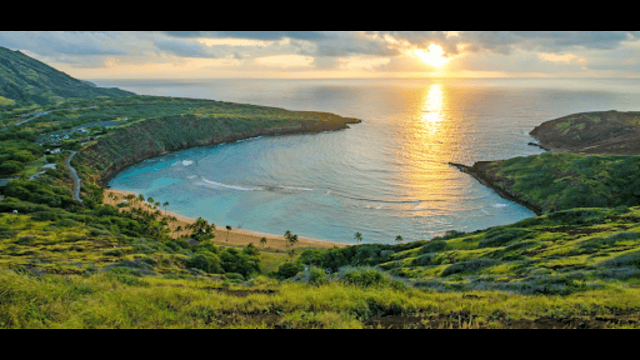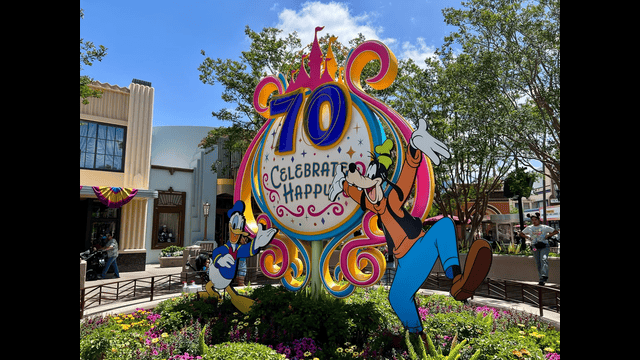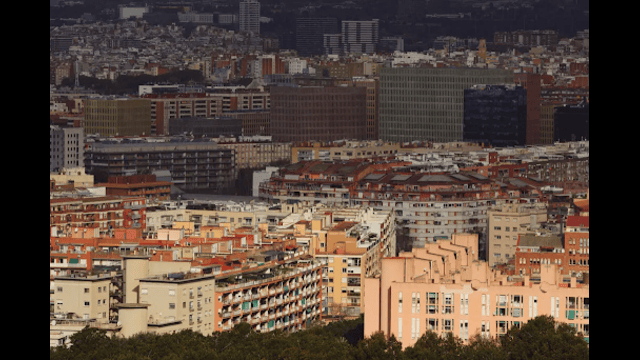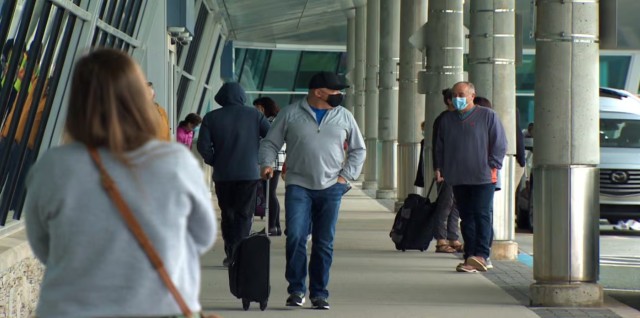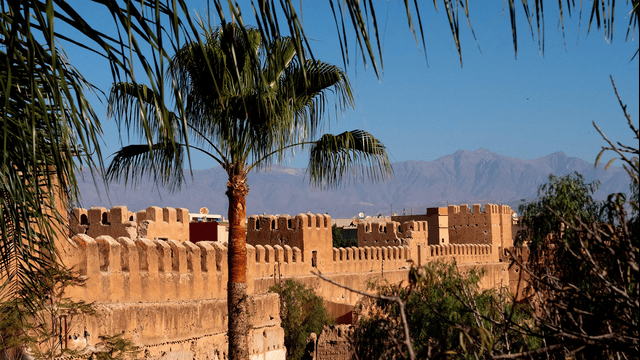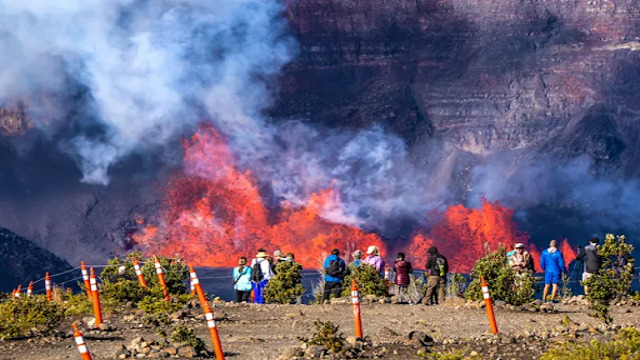
Visitors watch the eruption from a viewpoint near Keanakākoʻi crater. USA TODAY
Hawaii Volcanoes National Park on the Big Island is seeing a surge in visitors after the Kilauea volcano erupted early on a Monday morning. The eruption, which started around 2:20 a.m. at the base of the Halemaumau crater, has drawn large crowds eager to witness the powerful event. This marks the sixth eruption in the past four years, and it follows a series of earthquakes that signaled the volcano’s impending activity. Lava now covers 500 acres of the caldera floor, according to the United States Geological Survey (USGS) Hawaiian Volcano Observatory.
At the time of the eruption, fissures on the caldera floor were spewing lava fountains, with the lava flows being contained within the crater. Fortunately, no threats to nearby infrastructure or communities have been reported. The eruption remains within the park’s boundaries, but it has caused some challenges for visitors trying to enjoy the spectacle. The park has reported congestion at overlooks, full parking lots, and busy roads as more people flock to see the eruption firsthand.
Kilauea, one of the world’s most active volcanoes, is a major attraction at the UNESCO World Heritage Site, drawing thousands of tourists when eruptions occur. This current eruption has only increased the park’s popularity, with visitors keen to see nature’s raw power in action. According to Ken Hon, Head Scientist at the USGS HVO, this eruption is particularly large and voluminous, which adds to the excitement surrounding the event.
For those planning to visit, the eruption can be viewed from nearly all open areas around the caldera. The best viewpoints include Crater Rim Trail, Uekahuna, Kilauea Overlook, Wahinekapu (Steaming Bluff), and other popular overlooks. From these spots, visitors can see the lava flow over the crater floor, and in the right lighting, a vibrant reddish-orange glow will light up the sky.
The volcano holds deep cultural significance in Hawaiian tradition. The park refers to it as a wahi kapu, or sacred space, and it is believed to be the home of Pelehonuamea, the goddess of creation and destruction. The park encourages visitors to approach the eruption with respect, asking that they observe the event quietly as a sign of reverence.
For those with heart or respiratory conditions, the park also advises caution, as volcanic gases and particles can be harmful. It is recommended to check the air quality before visiting to ensure a safe experience. Additionally, while the eruption is exciting, the park reminds visitors that they are witnessing a sacred event and should conduct themselves accordingly.
The park is experiencing high visitor numbers, especially during the busy holiday season. By midday on the first day of the eruption, parking lots at popular spots were full, and roads were congested. For those hoping to avoid the crowds, early morning visits before sunrise or late-night visits after 9 p.m. are recommended. At night, the glowing lava against the dark sky offers a stunning view, but visitors should be prepared with flashlights, drive slowly, and dress warmly, as temperatures can be chilly at the summit.
It’s hard to predict how long this eruption will last, but past eruptions have ranged from a couple of weeks to more than a year, typically decreasing in intensity over time. As the situation can change rapidly, visitors should keep an eye on the park’s website for the most up-to-date information before planning their trip.


